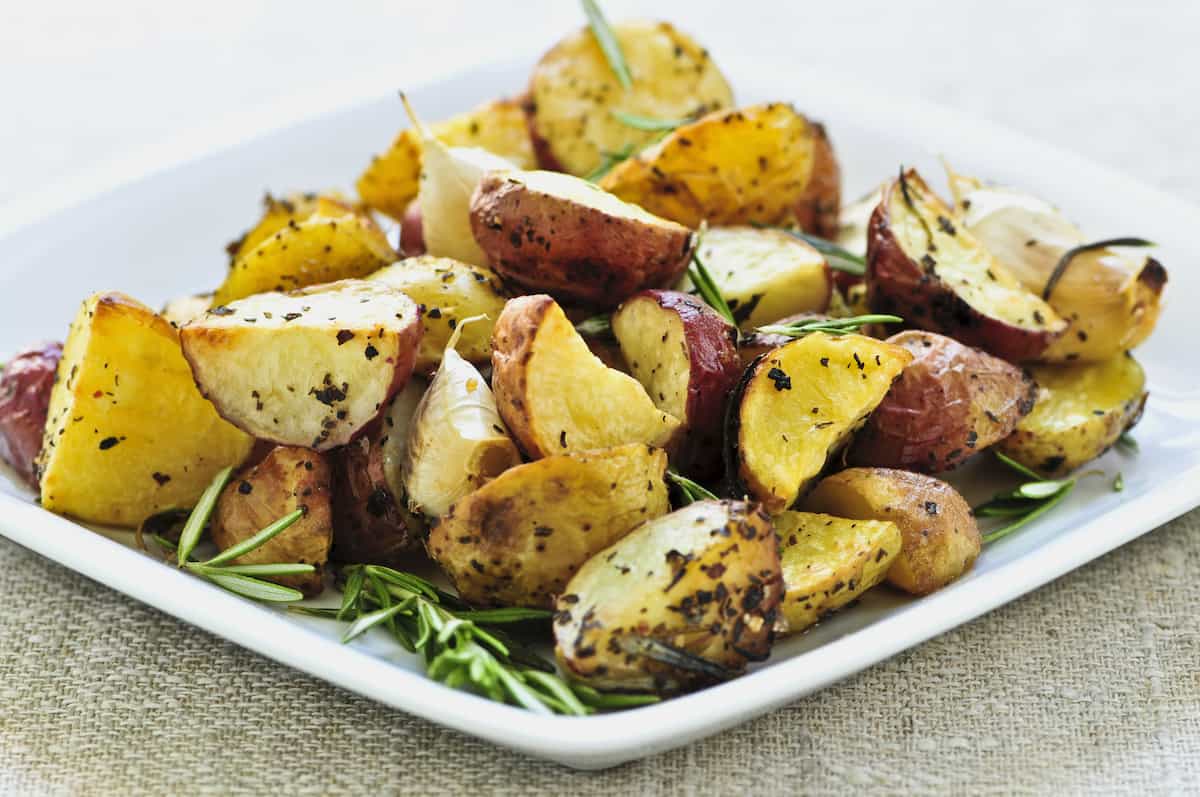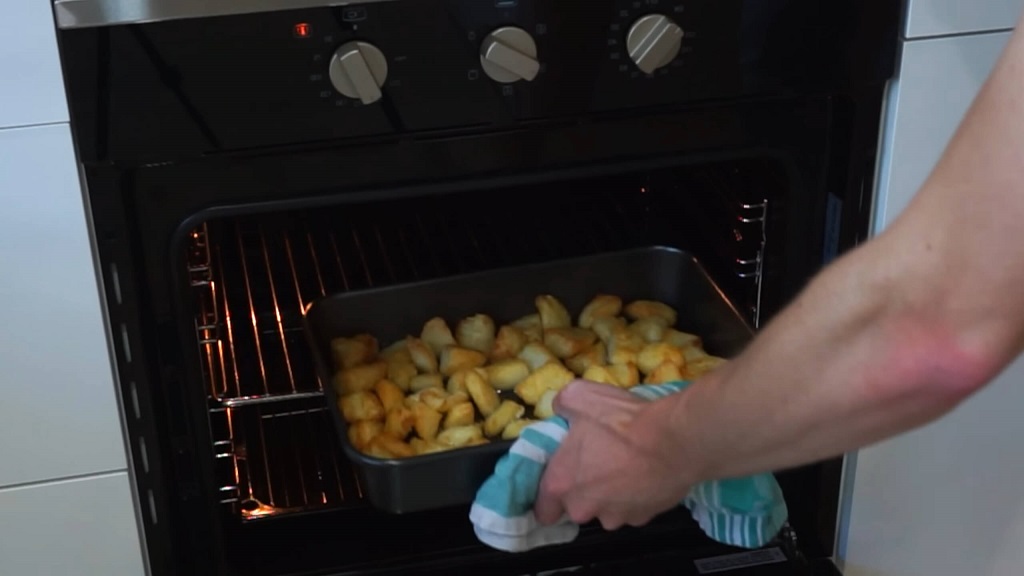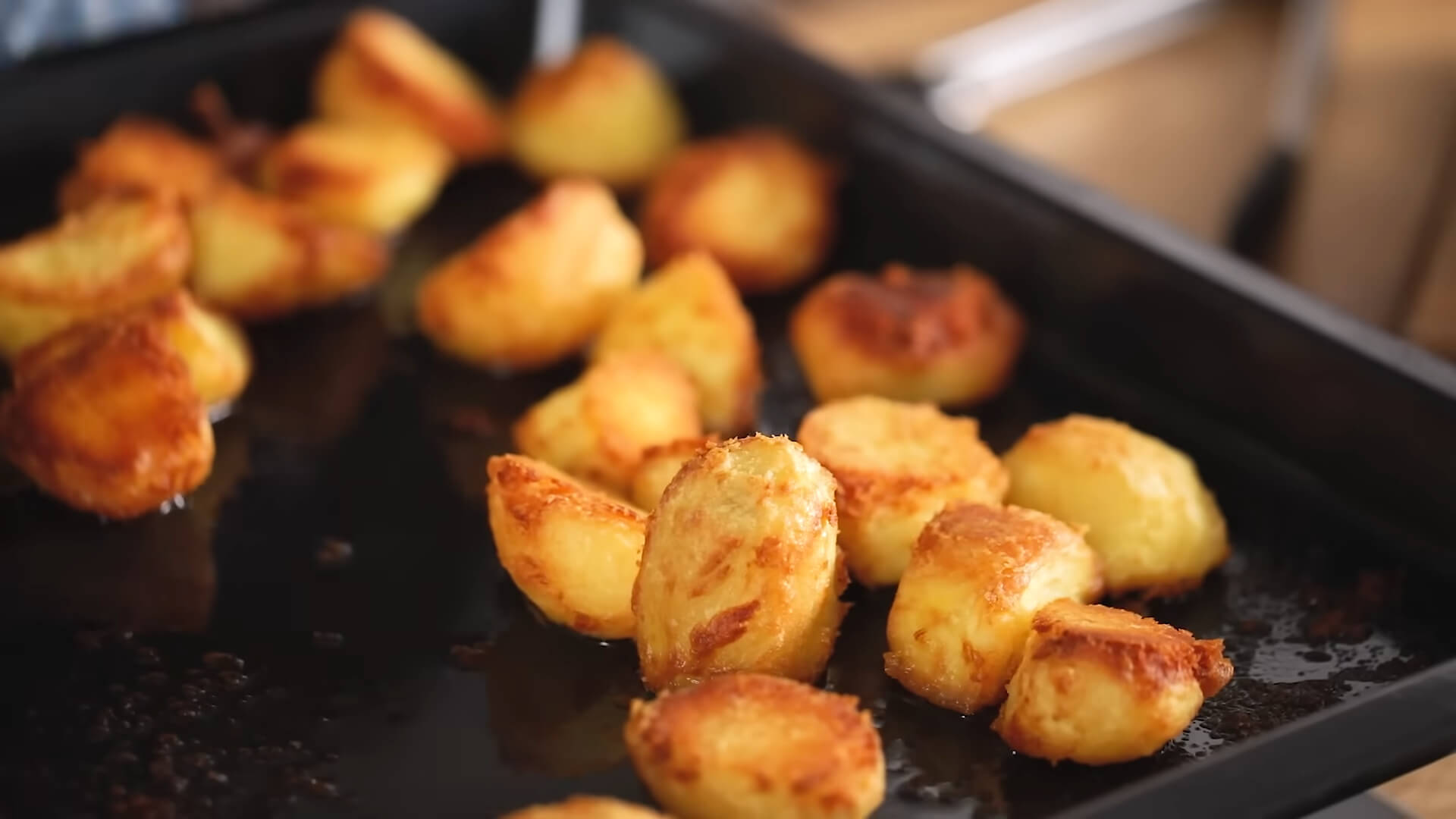
Roast potatoes lose their magic when reheated the wrong way. I once thought tossing them out was the only option—until I cracked the code.
After learning how to revive lasagna, fries, and even McNuggets, I tackled roast potatoes.
Now I always get crispy outsides and fluffy centers again.
1. Air Fryer

The air fryer was the method I had the most hope for, given its reputation for reheating food quickly and evenly. I preheated the air fryer to 350°F and added the potatoes directly to the basket without any additional oil.
They had been in the fridge overnight, so they were cold, but I decided to test them as-is to see how well the air fryer could restore their texture without extra steps.
Steps Taken
- I preheated the air fryer to 350°F.
- I placed the cold potatoes in a single layer in the basket.
- I cooked them for 5 minutes, shaking the basket halfway through.
Results
The air fryer brought back a good amount of crispiness to the outer skin while keeping the inside moist. However, some of the thinner potato edges ended up slightly over-crisped, bordering on dry.
The thicker chunks, on the other hand, were just about perfect. I did not add any oil during the process, and while the potatoes crisped nicely, a very light coating of oil might have enhanced the color and prevented slight dryness.

Pros
- Quick, taking only 5 minutes.
- Potatoes reheated evenly.
- Minimal effort is required.
Cons
- Slight dryness on thinner edges.
- Not quite the golden-brown color of freshly roasted potatoes.
Rating: 8.5/10
2. Oven

Reheating roast potatoes in the oven felt like a classic approach. It takes more time than the air fryer, but the promise of evenly reheated potatoes with crispy skin made it worth trying. I preheated the oven to 400°F and placed the potatoes on a baking sheet lined with parchment paper.
I did not add extra oil, opting to reheat them as they were to see how much of their original texture and flavor could be revived.
Steps Taken
- Preheated the oven to 400°F.
- Arranged the cold potatoes in a single layer on the baking sheet, ensuring they were not crowded.
- Heated them for 10 minutes, flipping halfway through for even crispiness.
You can also use it to reheat croissants.
Results

The oven delivered a solid result. The potatoes were crispy on the outside and warm on the inside, though the crispiness was not quite as sharp as it was when freshly made. The thicker pieces retained their fluffy interior, but some thinner slices came out a little less crispy than expected.
The lack of added oil kept them from looking as golden as I wanted, and the overall texture fell slightly short of perfection.
Pros
- Consistently reheated a large batch.
- Even heating throughout the potatoes.
- No extra equipment or tools are needed.
Cons
- Took longer than other methods (10 minutes).
- Some pieces were slightly less crispy than desired.
- Lacked the golden color without additional oil.
Rating: 8/10
3. Skillet

Using a skillet to reheat roast potatoes felt promising at first, but the reality was a bit underwhelming. I heated the pan with a drizzle of olive oil over medium heat and added the cold potatoes straight from the fridge.
The method seemed simple, but I quickly learned it requires more attention than I expected. I hoped to achieve an even crisp on all sides, but the results were hit-or-miss.
Steps Taken
- Heated a nonstick skillet with about a tablespoon of olive oil until shimmering.
- Added the potatoes directly to the pan without extra prep.
- Tossed them around for 5-6 minutes over medium-high heat, turning often.
Results
Some of the potato pieces crisped up nicely on the edges, but others became slightly burnt before the inside could warm through. Thicker pieces ended up warm but not hot, and thinner ones were overly crunchy.
The constant flipping required to prevent sticking and burning made this method feel less convenient than expected. The flavor was decent thanks to the olive oil, but the texture was inconsistent.
Pros
- Fast, taking about 5-6 minutes.
- Good for very small portions.
- Gave some nice crispy bits.
Cons
- Uneven heating; thicker pieces stayed lukewarm.
- Needed constant attention to prevent burning.
- Crispiness was inconsistent and lacked the satisfying texture of fresh potatoes.
Rating: 6/10
4. Microwave

Using the microwave to reheat roast potatoes felt like a last resort, but I decided to give it a fair try for the sake of this experiment. The goal was speed, so I lined a microwave-safe plate with a paper towel to absorb moisture and arranged the potatoes in a single layer.
I knew this method was unlikely to deliver crispiness, but I was curious to see if the potatoes could at least warm evenly without becoming unpleasantly chewy or soggy. It may seem as a quick and simple solution, but the microwave is not the right solution for all types of food, especially meat.
Steps Taken
- Lined a microwave-safe plate with a paper towel.
- Arranged cold potatoes in a single layer on the plate.
- Heated them in 30-second intervals for a total of 2 minutes.
Results
The microwave reheated the potatoes quickly, but that was where the positives ended. The outsides became soggy and limp, while the insides were unevenly warmed—some pieces were piping hot, and others were still cold in the center. The once-crispy skin turned chewy, and the flavor felt flat compared to other methods.
Adding a paper towel helped a little with excess moisture, but it could not save the texture. By the time I was done, the potatoes were edible, but just barely.
Pros
- Extremely fast, taking just 2 minutes.
- Requires no effort or prep.
Cons
- Texture was soggy and unappealing.
- Heating was uneven, leaving some parts cold.
- Completely lost the crispiness that makes roast potatoes enjoyable.
Rating: 3/10
Conclusion
Reheating roast potatoes is not as simple as tossing them back into any heat source. Each method has its strengths and weaknesses, but none fully replicates the perfection of freshly roasted potatoes. That said, some methods get surprisingly close if you are willing to put in a little extra effort.
The air fryer came out on top for its ability to deliver crispiness and warmth in a short amount of time. It is not perfect, as some edges can dry out slightly, but it is as close as you will get to freshly made without much hassle.
The oven is a solid alternative, especially for larger batches, offering consistent heating and crisping, though it requires more time and could benefit from a touch of oil for better results.
The skillet works well for small portions, but it demands constant attention and results in uneven textures. As for the microwave, it is best avoided unless you are desperate. It sacrifices texture and flavor entirely, leaving you with limp, soggy potatoes that are a shadow of freshly made ones.
Read Next – How to Reheat Sausage Rolls?
















